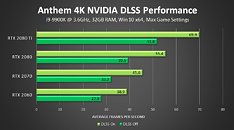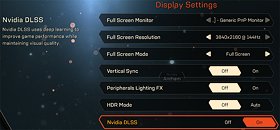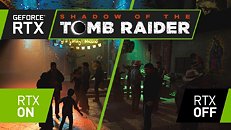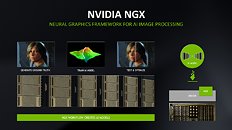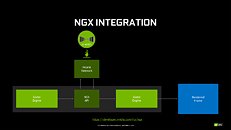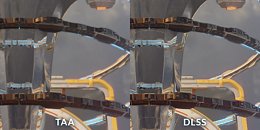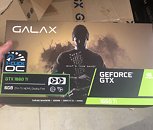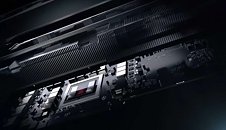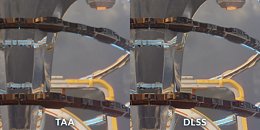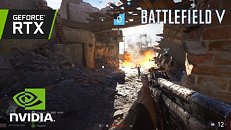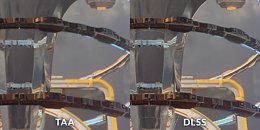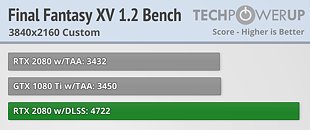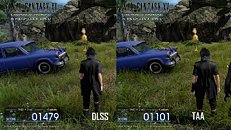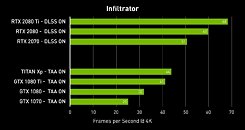
Anthem Gets NVIDIA DLSS and Highlights Support in Latest Update
Saying Anthem has had a rough start would be an understatement, but things can only get better with time (hopefully, anyway). This week saw an update to the PC version that brought along with it support for NVIDIA's new DLSS (Deep Learning Super Sampling) technology to be used with their new Turing-microarchitecture GeForce RTX cards. NVIDIA's internal testing shows as much as 40% improvement in average FPS with DLSS on relative to off, as seen in the image below, and there is also a video to help show graphical changes, or lack thereof in this case. DLSS on Anthem is available on all RTX cards at 3840x2160 resolution gameplay, and on the RTX 2060, 2070, and 2080 at 2560x1440. No word on equivalent resolutions at a non-16:9 aspect ratio, and presumably 1080p is a no-go as first discussed by us last month.
Note that we will NOT be able to test DLSS on Anthem, which is a result of the five activations limit as far as hardware configurations go. This prevented us from doing a full graphics card performance test, but our article on the VIP demo is still worth checking into if you were curious. In addition to DLSS, Anthem also has NVIDIA Highlights support for GeForce Experience users to automatically capture and save "best gameplay moments", with a toggle option to enable this setting in the driver. A highlight is generated for an apex kill, boss kill, legendary kill, multi kill, overlook interaction, or a tomb discovery. More on this in the source linked below in the full story.
Note that we will NOT be able to test DLSS on Anthem, which is a result of the five activations limit as far as hardware configurations go. This prevented us from doing a full graphics card performance test, but our article on the VIP demo is still worth checking into if you were curious. In addition to DLSS, Anthem also has NVIDIA Highlights support for GeForce Experience users to automatically capture and save "best gameplay moments", with a toggle option to enable this setting in the driver. A highlight is generated for an apex kill, boss kill, legendary kill, multi kill, overlook interaction, or a tomb discovery. More on this in the source linked below in the full story.
